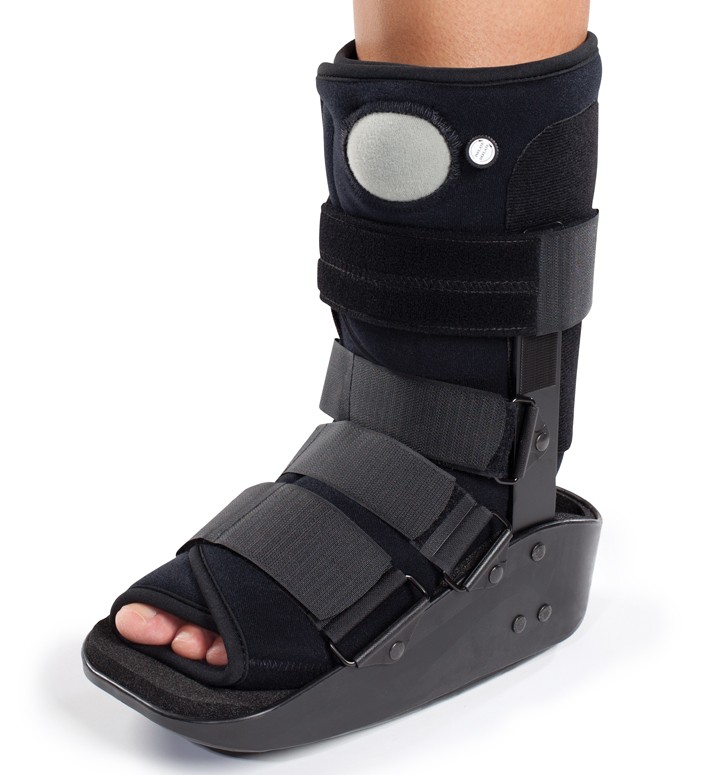Orthopaedic Boot Advice
Orthopaedic Boot Advice
Maintenance
The boot should be worn underneath clothing, although a light cotton sock can be worn on the foot. The liners are removable and can be hand washed. Check your skin for any changes such as pressure areas or sores.
It is important to keep active and drink plenty fluids to reduce your risk of venous thromboembolism (VTE) e.g. blood clots in the leg (deep vein thrombosis – DVT) or chest (pulmonary embolism – PE). Try to use a shoe of similar height to the boot on your other foot. This will help you walk more easily. Do not wear completely flat shoes such as flip-flops.
Frequently Asked Questions
Can I remove my boot?
The clinician or nurse will advise you when you are given your boot e.g. for sleeping and cleaning purposes. The boot should be worn at all times unless advised by your clinician or nurse when fitted, or at your future appointments.
If you have an injury to your Achilles tendon, it is important to keep your foot in the same position as in the boot with your foot pointing down whilst washing.
Can I walk on my boot?
You will be told if and when to weight bear by the clinician or nurse when fitted with the boot.
Can I drive in the boot?
No, as it is not safe and you will not be insured, as you will not be in complete control of your vehicle.
You may have been given blood thinning injections or medication whilst in my boot?
This is to prevent venous thromboembolism (VTE) i.e. blood clots. When you are not fully weight bearing and/or have injuries to your bones or tissues the circulation may not be as good and can cause clots to form.
Signs and Symptoms of Venous Thromboembolism (VTE)
a. Pain in the calf, thigh or chest
b. Sudden onset of shortness of breath or palpitations without exercise
c. Increased swelling of the leg
d. Redness or bluish discoloration of the limb
If you experience any of the above seek medical attention urgently by calling 999 or going to your nearest A&E.
Pressure Areas
This is sometimes caused by injury to the skin which break down. Reposition the leg to prevent pressure in one area whilst resting.
Check the limb regular if you can for any signs of skin breakdown especially if you have frail skin or have diabetes or reduced sensation in the limb.
Contact the department or A&E as appropriate on the numbers below if you:
- Develop any sores or blisters under the boot
- Are unable to move your toes knee or leg
- Develop any signs of VTE even out of hours
- Do not have enough blood thinning medication or injections
- Develop excessive pins and needles
- Develop severe skin irritation or itching
- Experience pain not helped by regular pain relief
Contact Numbers
- Plaster room: 01204 390373 (option 3) Monday – Friday 8.30 – 5pm / Saturday 8.30 – 1pm / Sunday 12.30 – 5pm
- A&E: 01204 390300
If you require a copy of this leaflet in any other language or format, such as large print or audio, please contact 01204 390193.
